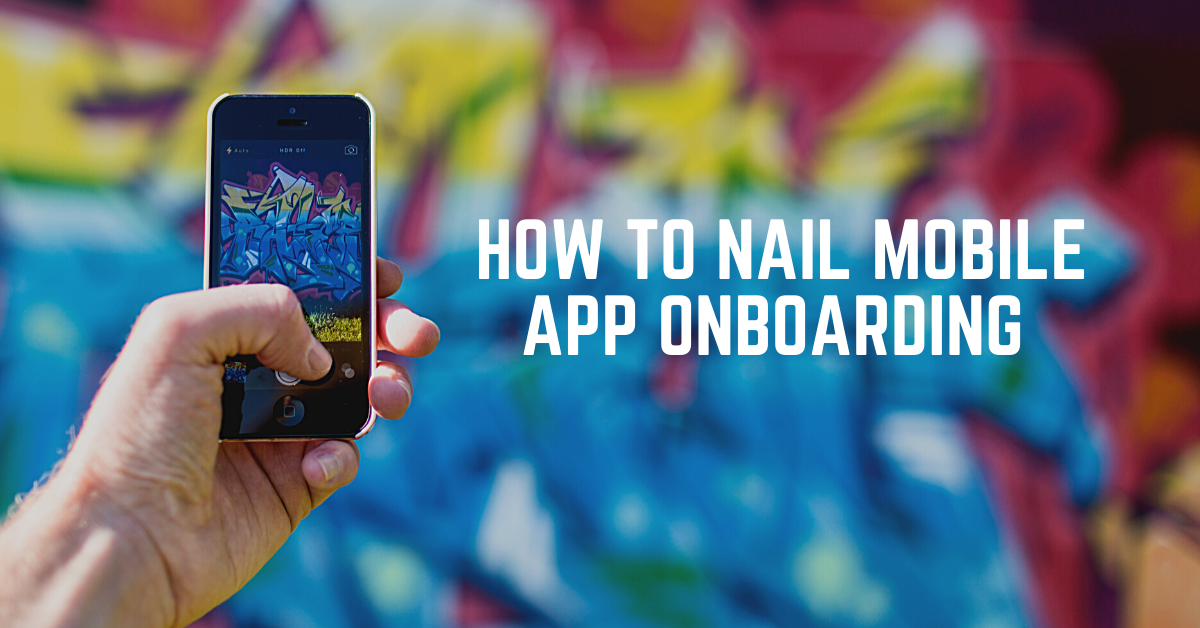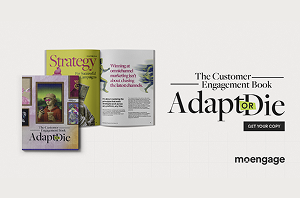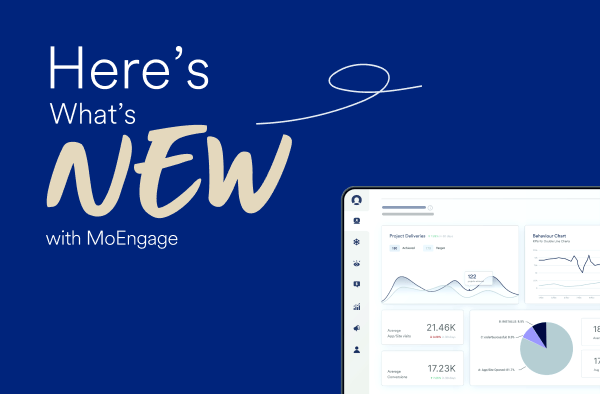How to Nail Mobile App Onboarding

Reading Time: 5 minutes
The biggest leak in mobile apps is right after download and first use. That’s when you lose up to a fifth of your customers. But you don’t have to. Yes, some people download an app because they’re bored, or because for 99¢ there’s nothing to really lose. They don’t really want the app, they delete it – and nothing you could have said to them would change that.
But more often you get disappointed explorers. They really want to learn their way around your app. But with an unfamiliar user interface, functions that might be new to them and plenty of other apps on their phone or tablet already, their first use is bewildering and unpleasant. They never get to find out first-hand how awesome your app really is, because their disappointment at finding it hard to use makes them quit.
| Bonus Content
👉 The Complete Growth Strategy [Download Handbook] 👉 Beginner’s Guide to Omnichannel Marketing for 2021 [Download Ebook] 👉 Customer Lifecycle Marketing Campaigns: An In-depth Guide [Download Ebook] |
I know and you know that your app has been carefully architected and designed to be super easy to use. But your customer doesn’t. They need a map of their new world so they can explore comfortably and experience for themselves what your app can really do for them. They need an onboarding process. And, given what it can do for retention and engagement, so do you. Here’s how to nail it.
1: Unpack The Bed First
I got this metaphor from my mother’s advice for moving house. What do you think you’re really, really going to want at the end of that process? Probably not your best shoes, or your books. Probably your bed.
When you’re onboarding new users, start with what they really need. Remember they already downloaded your app. They’ve already done some hard work for you. So make the first step of your onboarding process something that’s simple and easy but still shows value. Give them time to get used to your app – don’t frogmarch them through your power-user features. FourSquare (Gaana) does a very good job of this. The onboarding process starts with a restatement of the value proposition and a call to action, and the onboarding flow has an ‘escape hatch’ – users can skip it at any time.
2: Make It Interactive
There’s a saying that crops up any time this idea is touched on: ‘Show me and I forget, teach me and I may remember, involve me and I will learn.’ It’s got a good point. Nobody reads instruction manuals – they never did. People want to learn your app by experiencing it and using it, and since that’s the most effective way to educate them anyway, that’s where you should go. A picture may be worth a thousand words, but actually getting involved is priceless because it lets your customers experience at first hand what your app can offer.
Mailbox (Linkedin/ Airbnb) shows the way ahead here: at each stage of the onboarding flow, users are asked to use the feature that’s being introduced, walked through how it works and asked for feedback.
3: Grease The Wheels
If you haven’t yet demonstrated to your users the value of your app, they’re that much less likely to take the trouble to overcome any friction points. You could lose a potential long-term loser to a tricky login page. That doesn’t make much sense. Friction points need to be addressed. Can you move them around so people have seen some of your value before you ask them to log in for the first time? Or can you use social logins to ease that process along?
Heyday does this well, using a series of screens to ask for permissions like location tracking that avoid breaking flow. The permission requests are built into flows that show users why they deliver value, so they’re primed to say ‘yes’ and to see them in terms of functionality being offered, not pestering requests that don’t do anything for them.
4: How Much More Of This Is There?
When you do a task that’s new, and you don’t know how long it’s going to be, it’s stressful. Studies show that when people are asked to wait an indefinite amount of time, they experience it as longer than when there’s a timer. Make sure your users can always locate themselves within the onboarding process. If your app has lots of functions and is complex to learn, make the onboarding modular and consider gamifying it.
Magazine app Zinio does a solid job of offering users a roadmap of where they are in the app. Going a step further than a percentage completion bar or a ‘3 of 5’ page counter, Zinio’s onboarding flow uses a visual roadmap that lays out features and guides users through exploring them so you can place yourself in the app and the onboarding flow visually.
5: Talk English
Not jargon, not robotic business speak, and not ‘hey you guys!’ fake cool. Just tell people what they need to know politely, and as clearly and simply as possible. The more text you use, the less chance there is that people will read it. And the more specialized terms you use the more you put people off. The message you want is, ‘this is fun, easy and there’s a pay-off,’ not ‘this is hard and will make you feel dumb.’
When you first use project management app Basecamp, you’re greeted with some clear, simple copy that tells you what to expect, reminds you that you’re in a free trial and encourages you to try the app’s features and build your projects inside it. It’s welcoming, it actually tells you things you need to know and it’s super easy to read.
6: ABO
Always Be Onboarding. I know, I said to start with the bed – but don’t stop there. Consider onboarding advanced features for users who’ve had the app a while or whose data indicates that that functionality might actually be core for them. The target should be to have every user be a power user who does everything your app can possibly do. So help them.
For some apps, this can take place in-app. Tracking user behavior in-app and correlating certain behaviors with a higher usage of the app’s advanced features can leave you in a position to approach those users before they start trying to teach themselves to use advanced features with the help of Google, and offer them in-app tutorials. In other cases, it might make sense to make the initial approach through push or even email.
Google’s Inbox app aces this, providing user-triggered onboarding throughout the app so every time you use something for the first time, you’re supported.
7: Test, Test, Test
Your onboarding campaign is part of your app, because it’s part of your user’s experience of your app. It needs to be as well-designed as the app is. Use user tracking to follow your user journey through the app and figure out where you need to meet them along the way to get them where you want them. Screen touch heatmapping can provide vital info on which buttons or features are getting attention and which, from the user’s point of view, are just taking up real estate to no purpose. Testing, data collection and analysis and even interviews and surveys all have a part to play in creating an optimized onboarding process that channels every possible user over the hump and into the frequent-user territory.
8: Gamify It
Onboarding can be a few quick show-and-tells of your main features. Or it can be a comprehensive guide to the whole app, with medals or trophies for completing sections, mini-games that are unlocked by achievements and all the other structural elements that made it impossible for us not to sacrifice our childhood weekends to Sega and Nintendo. We know they’re alluring and addictive – just look at the financial success of Candy Crush – and gamifying the app itself works great for or for language tuition app DuoLingo. Gamify the onboarding process and users will actively want to learn how much your app can do for them.
Conclusion
Onboarding is how new users get to feel comfortable with your app. What happens immediately after signup can make or break an app, and the power to decide which direction things go is in your hands. Build a killer onboarding flow that’s easy to understand and fun to use, and your customers will learn their way around your app, discover its value for themselves and wonder how they ever did without it.













